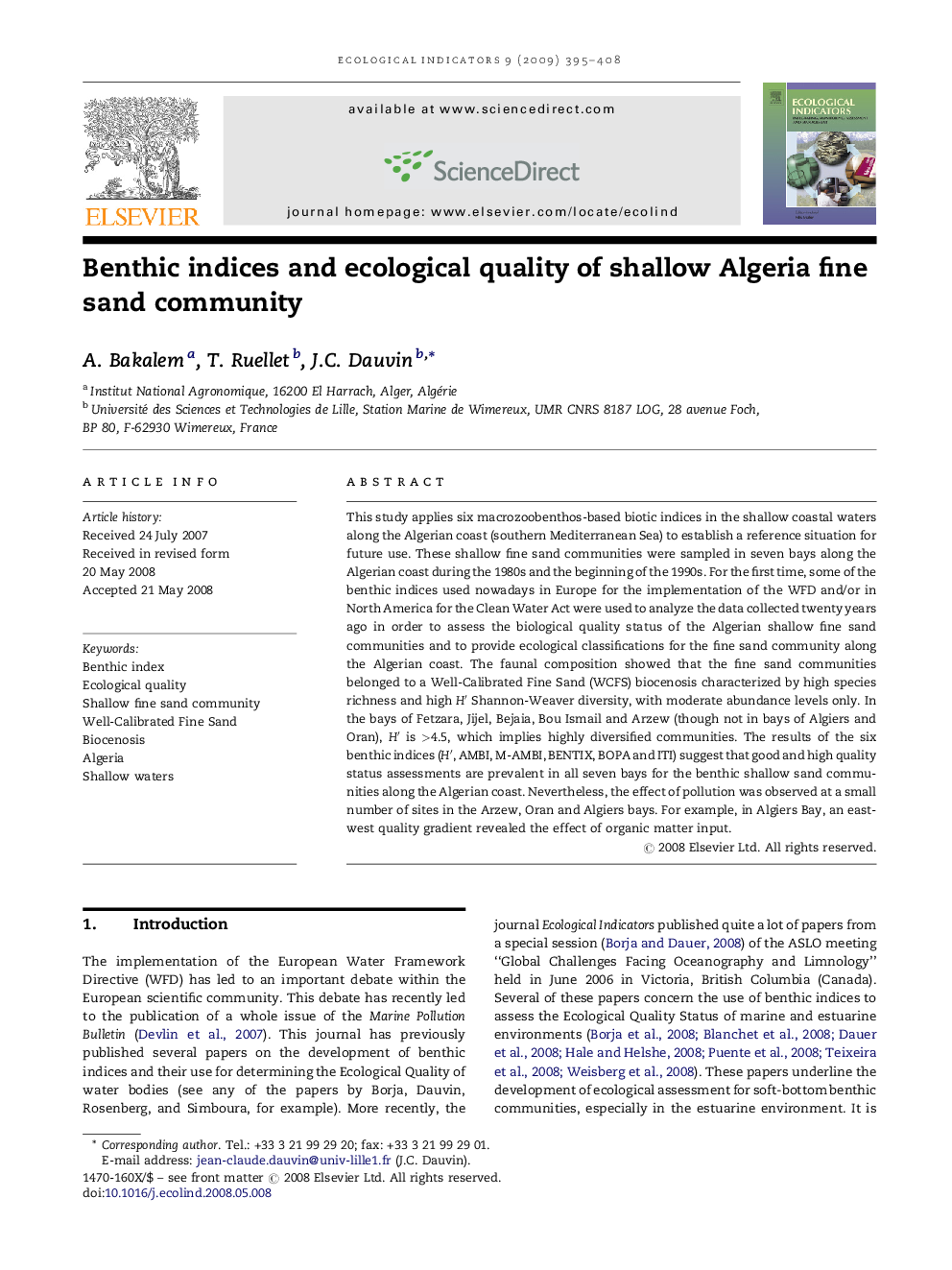| Article ID | Journal | Published Year | Pages | File Type |
|---|---|---|---|---|
| 4374460 | Ecological Indicators | 2009 | 14 Pages |
Abstract
This study applies six macrozoobenthos-based biotic indices in the shallow coastal waters along the Algerian coast (southern Mediterranean Sea) to establish a reference situation for future use. These shallow fine sand communities were sampled in seven bays along the Algerian coast during the 1980s and the beginning of the 1990s. For the first time, some of the benthic indices used nowadays in Europe for the implementation of the WFD and/or in North America for the Clean Water Act were used to analyze the data collected twenty years ago in order to assess the biological quality status of the Algerian shallow fine sand communities and to provide ecological classifications for the fine sand community along the Algerian coast. The faunal composition showed that the fine sand communities belonged to a Well-Calibrated Fine Sand (WCFS) biocenosis characterized by high species richness and high Hâ² Shannon-Weaver diversity, with moderate abundance levels only. In the bays of Fetzara, Jijel, Bejaia, Bou Ismail and Arzew (though not in bays of Algiers and Oran), Hâ² is >4.5, which implies highly diversified communities. The results of the six benthic indices (Hâ², AMBI, M-AMBI, BENTIX, BOPA and ITI) suggest that good and high quality status assessments are prevalent in all seven bays for the benthic shallow sand communities along the Algerian coast. Nevertheless, the effect of pollution was observed at a small number of sites in the Arzew, Oran and Algiers bays. For example, in Algiers Bay, an east-west quality gradient revealed the effect of organic matter input.
Related Topics
Life Sciences
Agricultural and Biological Sciences
Ecology, Evolution, Behavior and Systematics
Authors
A. Bakalem, T. Ruellet, J.C. Dauvin,
